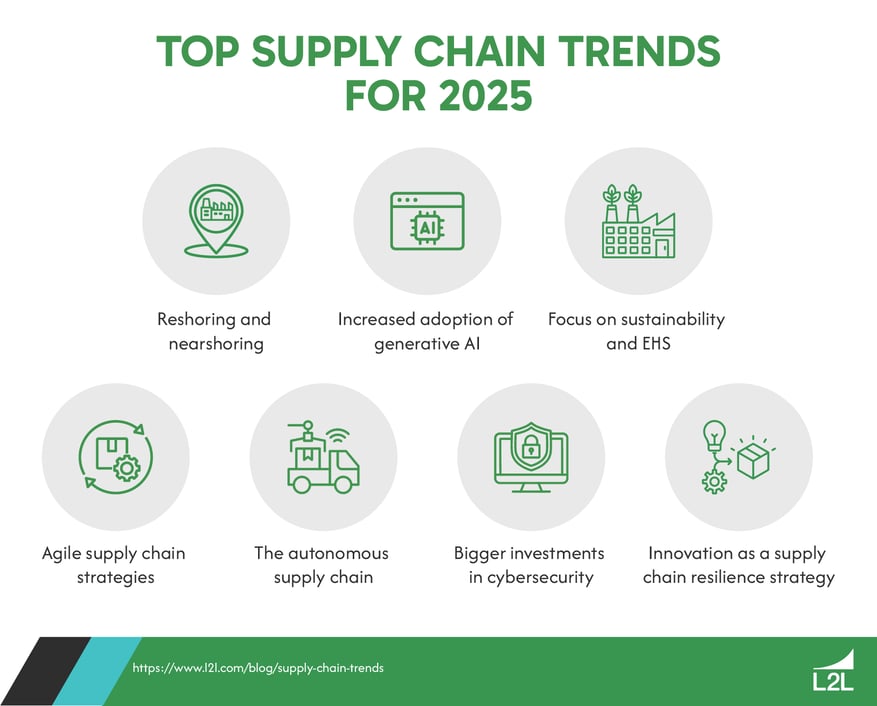The global trade landscape in 2025 is increasingly volatile, with new tariff wars disrupting supply chains worldwide. The United States has imposed tariffs on key trading partners, including China, Mexico, and Canada, creating ripple effects across industries. Businesses are grappling with higher costs, delays, and the need to rethink sourcing strategies. This blog explores the current state of these tariff wars, their impact on global supply chains, and actionable strategies for businesses to adapt.
The Current Landscape of Global Tariff Wars
The year 2025 has been marked by aggressive tariff policies from the United States. Key developments include:
- New Tariffs: The US has imposed tariffs on imports from China (electronics), Mexico (automotive parts), and Canada (raw materials).
- Industries Affected: Sectors like manufacturing, consumer goods, and technology are bearing the brunt of these policies.

How Tariffs Disrupt Supply Chains
Rising Costs Across Supply Chains
Tariffs have increased the cost of raw materials and transportation. For example:
- A 15% tariff on steel imports has raised production costs for US manufacturers.
- Freight costs have surged due to longer shipping routes aimed at bypassing tariffed regions.
Supplier Diversification Challenges
Businesses are shifting sourcing from China to other regions like Vietnam or India. However:
- Labor costs in alternative markets are higher.
- Managing multiple suppliers across different regions adds logistical complexity.
Retaliatory Measures and Geopolitical Impacts
Export Controls by Affected Countries
Countries targeted by US tariffs have responded with their own measures:
- China: Restricted exports of rare earth metals critical for electronics and defense industries.
- Mexico: Imposed tariffs on US agricultural products like soybeans.
Trade Realignments

Nations are forming new alliances to counteract US policies:
- The BRICS nations are exploring alternatives to US-dominated trade routes.
- Emerging markets like Vietnam are benefiting from increased foreign investment.
Strategies for Businesses to Adapt
Leveraging Technology for Resilience
Predictive analytics and AI tools are helping companies optimize supply chains by forecasting disruptions and identifying alternative sourcing options.
Building Regional Supply Chains
Localizing supply chains can reduce dependency on global networks. For instance:
- Automotive manufacturers are increasing production in North America to minimize exposure to tariffs.
Scenario Planning and Risk Mitigation
Businesses are modeling “what-if” scenarios to prepare for future disruptions. This approach enables them to respond swiftly to changes in trade policies.
Future Outlook for Global Supply Chains
Key Trends to Watch in 2025
- Adoption of blockchain technology for greater transparency.
- Increased use of automation to offset rising labor costs.
- Geopolitical developments such as China’s stance on Taiwan or tensions in the Middle East.

Policy Changes
Governments and businesses must collaborate to mitigate risks:
- Governments should prioritize multilateral trade agreements.
- Businesses need to invest in technology and diversify their supplier base.
Gold Surges Past $2,800: Is It Time to Reassess Your Strategy?
The ripple effects of new tariff wars in 2025 are reshaping global trade dynamics. While some countries and industries stand to benefit from these shifts, others face significant challenges that require strategic adaptation. By leveraging technology, diversifying suppliers, and staying informed about geopolitical developments, businesses can navigate this complex landscape effectively.
Subscribe to Our Newsletter for Exclusive Updates and Insights
By subscribing, you’ll gain access to a treasure trove of valuable content delivered straight to your inbox. Stay ahead of the curve with expert articles, insider tips, and thought-provoking resources carefully curated by our team of professionals. Whether you’re a seasoned enthusiast or just getting started, our newsletter is a must-have resource for staying informed and inspired.
